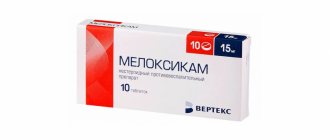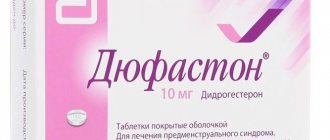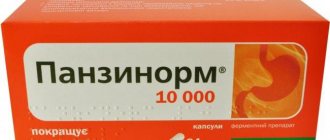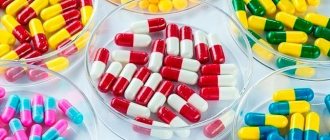Application area
Novanephron enjoys well-deserved popularity among general practitioners and specialists.
It is often included in complex therapy by urologists for inflammatory processes. In the treatment of cystitis, Novonephron competes with Conephron, and often defeats it, due to its richer composition of herbs. It is also actively used by therapists as an antihypertensive and choleretic agent. Like any representative of the phytogroup, Novanephron has virtually no restrictions on its purpose.
Of course, if the patient has a tendency to allergic reactions, it is necessary to start taking it with test doses and monitor the body’s reaction. There is no official prohibition on prescribing this medicine to children, but a consultation with a pediatrician is required first, with constant laboratory monitoring of the treatment process.
Novanephron: composition, instructions and analogues
Kejibeling: description, instructions for use, reviews
Novanefron belongs to the group of herbal medicines. It is quite strong in effect and mild in impact as a foreign-made uroseptic. It has pronounced anti-inflammatory, diuretic and, to a lesser extent, antibacterial and antiseptic effects.
Also, the herbs included in its formulation have a choleretic, antisclerotic, hemostatic and hypotensive effect on the body. This set of herbs guarantees comprehensiveness and promotes overall health.
The composition of the components is rich in microelements, essential oils, amino acids and flavonoids. Magnesium citrate additionally provides anti-stress and restorative effects.
Novanephron can be found in many pharmacy chains; a prescription is not required. The average price for 30 tablets was approximately 750 to 800 rubles.
Compound
- Orthosiphon stamineus benth 0.08g.
- Corn silk (com silk) 0.08g.
- Bearberry (bearbeny) 0.08g.
- Cranberry (cranberry jiua) 0.08g.
- Horsetail (equiseftum) 0.04g.
- Dandelion officinalis (bilberry common) 0.04g.
- Common blueberry (dandelion) 0.04g.
- Magnesium citrate 0.02g.
Release form
This medicine is presented in the form of tablets with a gastroprotective coating. The package contains 2 blisters of 15 pieces, with an insert.
Instructions (how to take)
Despite the fact that this drug is considered a dietary supplement, it is not recommended to use it on your own.
It is important to remember that any treatment must be approved by a doctor. The standard course of therapy with Novanephron ranges from 15 days to 1 month
After meals in the morning and evening, you need to take a whole tablet or two with plenty of liquid.
Application area
Novanephron enjoys well-deserved popularity among general practitioners and specialists. It is often included in complex therapy by urologists for inflammatory processes. In the treatment of cystitis, Novonephron competes with Conephron, and often defeats it, due to its richer composition of herbs.
It is also actively used by therapists as an antihypertensive and choleretic agent. Like any representative of the phytogroup, Novanephron has virtually no restrictions on its purpose.
Of course, if the patient has a tendency to allergic reactions, it is necessary to start taking it with test doses and monitor the body’s reaction. There is no official prohibition on prescribing this medicine to children, but a consultation with a pediatrician is required first, with constant laboratory monitoring of the treatment process.
Main indications for use
- Newly diagnosed and chronic pathologies of the genitourinary organs.
- Ascites of any etiology.
- Urolithiasis disease.
- Cardiovascular failure, especially when the patient has an accentuated edema syndrome.
- Arterial hypertension.
- Liver diseases, in particular cholecystitis, cirrhosis and helminthic infestations.
- Nephrotic syndrome.
- Chronic infectious hepatitis.
It is acceptable to take Novanephron to prevent the above conditions. Persons suffering from frequently recurring cystitis will benefit from taking 1 tablet per day for a two-week course.
Recently, Novanephron has been actively included in the complex therapy of prostatitis.
Contraindications
For people with gastrointestinal ulcers and gastritis, with high acidity, Novanephron is not recommended. It is also worth abstaining for those whose blood clotting is higher than normal. Individual intolerance to the constituent substances is not excluded. During pregnancy, it is better to avoid this drug, but as prescribed by a specialist, its use in the 3rd trimester is acceptable.
Novanephron's analogues
The main competitors of the drug in the pharmaceutical market are Canephron, Cyston, Fitolysin and Urolesan. All of them are similar in their spectrum of actions and contain natural ingredients.
Synthetic drugs with similar indications include: Nolicin (Norfloxacin) and Furagin (Furazidin).
These are antibiotics and their unreasonable use can provoke dangerous undesirable consequences, so they are prescribed by a doctor.
It is important to remember that it is unwise to indulge in self-medication! Visit specialists on time, get answers to your questions and be healthy!
Loading…
Novanephron No. 30 tablets
NOVANEPHRON
EACH TABLET CONTAINS:
- Orthosiphon stamineus Benth. - 80 mg
- Bearberry (Arctostaphylos uva-ursi) – 80 mg
- Cranberry (Vaccinium oxycoccos) – 80 mg
- Corn silk (Stigmatis Zeae maydis) - 80 mg
- Horsetail (Equisetum arvense L.) – 40 mg
- Blueberry (Vaccinium myrtillus L.) – 40 mg
- Dandelion (Taraxacum officinale Wigg.) – 40 mg
- Magnesium citrate — — 20 mg
PHARMACOTHERAPEUTIC GROUP: Uroseptic, diuretic and anti-inflammatory agent.
NOVANEFRON is a complex product that contains components with uroseptic, anti-inflammatory and diuretic properties. As well as components that prevent the deposition of salts in the form of kidney stones and make it possible to reduce and remove existing ones.
CYSTITIS is one of the most common diseases in outpatient medical practice that affects women, usually of reproductive age. For many years, an integrated approach to the treatment of cystitis has been fundamental. To effectively eliminate the disease, you must follow the following principles:
— fight against urinary tract infection;
- relieving inflammation from the bladder mucosa;
- relief of pain symptoms;
- increasing the body's resistance;
- prescribing a gentle diet and drinking plenty of fluids.
Today, despite the huge selection of pharmacological drugs, the problem of treating acute cystitis and other urinary tract infections is still relevant. Often these are complex products containing a number of active ingredients. Herbal products occupy one of the leading positions in the fight against this problem.
Novanephron combines components with diuretic (Orthosiphon, Horsetail, Bearberry, Dandelion), antiseptic (Blueberry, Cranberry) and anti-inflammatory (Horsetail, Bearberry, Cranberry, Corn silk, Blueberry) effects. These components can help to comply with all of the above principles.
URINOLOGICAL DISEASE - The widespread prevalence of this disease has been confirmed by many scientific studies. Kidney stones affect up to 5% of the population, and the lifetime risk of developing a stone is about 8-10%. The increased incidence of kidney stones in industrialized countries is associated with a higher standard of living and is also directly related to race, ethnicity, and area of residence. Stones are formed twice as often in men compared to women. The process of stone formation depends on many factors. Moreover, in 70% of cases, according to statistics, calcium oxalates are deposited.
Novanephron contains components that influence the formation and components that help reduce and remove already formed stones. Such components are Magnesium citrate and corn silk. Mg2+ ions maintain osmotic balance. Magnesium levels are known to be higher in healthy people than in patients with oxalate stones. And according to scientific publications, increasing the level of magnesium in the urine can prevent the precipitation of calcium compounds and thus prevent or slow down the occurrence of oxalate stones. Long-term magnesium replacement therapy has been shown to reduce the rate of stone recurrence in patients with oxalate stones by 90%. And due to corn silk, the stones are significantly reduced in size, which facilitates their removal.
APPLICATION AREA:
Acute and chronic inflammatory diseases of the genitourinary organs (urethritis, cystitis, pyelonephritis, vulvitis, vaginitis)
Kidney stones (nephrolithiasis) and bladder stones
· Chronic viral hepatitis.
Nephrotic syndrome
· Arterial hypertension
· For cardiovascular failure of II-III degree (together with cardiac glycosides)
· Cholecystitis, liver cirrhosis, ascites, helminthic infestations
SIDE EFFECTS: Novanephron is usually well tolerated. Rarely: allergic reactions, weakness
CONTRAINDICATIONS:
Hypersensitivity to the components of the drug. Hyperacid gastritis, peptic ulcer of the stomach or duodenum due to increased acidity of gastric juice, increased blood clotting.
USE DURING PREGNANCY AND LACTATION: Since biologically active food additives are freely available to consumers, Novanephron is not recommended for use by pregnant women without a doctor's recommendation. The doctor, having determined the need for arbutinin and hydrochonine in a pregnant woman, can prescribe Novanephron. The use of Novanephron during pregnancy is possible only in the 2nd and 3rd trimester.
METHOD OF APPLICATION AND DOSES: When used freely by the consumer, the standards indicated on the packaging must be observed. If the drug is prescribed by a doctor, changes in dosage are possible. 1-2 tablets twice a day, morning and evening. Duration of treatment is 2-8 weeks.
STORAGE CONDITIONS: At a temperature not exceeding 250 C. Out of the reach of children.
CONDITIONS FOR DISCHARGE FROM PHARMACIES: Without a prescription.
NAME AND ADDRESS OF MANUFACTURER:
Gricar Chemical Srl, Via S. Giuseppe 18/20 – 20861 Brugherio (MB) – Italy, Italy
TRADEMARK AND PRODUCT OWNER: Novator Pharma LLP, Office 21, Shepherd Market, London, W1J 7JY, UK.
ORGANIZATION AUTHORIZED TO ACCEPT CLAIMS FROM CONSUMERS AND ITS LEGAL ADDRESS: Novator Pharma LLC, Kyrgyz Republic, Bishkek, 7 mrn. 16, apt. 18.
Questions and answers
Reviews of the drug Canephron h
— What does Nephroneo (Monufron) help with?
— The purpose of the Nephroneo dietary supplement is to maintain the health of the kidneys and urinary tract. Therefore, this remedy is recommended for use for complex treatment or prevention of cystitis, pyelonephritis, and urolithiasis.
— Can Canferon be replaced with Nephroneo (Monufron)?
— Canephron and Nephroneo have identical active components in the same dosages, which suggests a similar therapeutic effect of these two drugs. Therefore, in principle, such a replacement can be made. But there is one feature - Nephroneo is not a full analogue of Canephron, since Nephroneo is a dietary supplement, and Canephron is a medicine.
It should be assumed that the lack of clinical studies allows the manufacturer of the dietary supplement Monufron to maintain a more affordable price for this product. The logic is clear: why spend additional money, which will then be included in the price of the medicine, if you can register it as a dietary supplement? You can read more about the differences between dietary supplements and medications here.
— How to give Monufron to a child?
— There are age restrictions on the use of the biological food additive Nephroneo (Monufron). Namely: this remedy is used only in adults (over 18 years of age). Therefore, despite the same number of active ingredients, Canephron solution (from 1 year) or Canephron tablets (from 6 years) are still more suitable for children.
Learn more about the authors of this article.
Novanephron No. 30 tablet.
Novanephron No. 30 tablet. Release form Tablets. Composition 1 tablet contains: Active substances: stamineus orthosiphon (orthosiphon stamineus benth) 80 mg; bearberry (bearberry) 80 mg; cranberry juice 80 mg; corn silk (com silk) 80 mg; horsetail (equiseum) 40 mg; blueberry (dandelion) 40 mg; dandelion (bilberry common) 40 mg; magnesium citrate 20 mg. Pack of 30 pcs. Pharmacological action Orthosiphon stamineus benth. Orthosiphon leaves contain the glycoside orthosiphonin (0.01%), alkaloids, fatty oils (2.7%), tartaric acid (1.5%), citric acid, essential oils (0.2 - 0.66%), saponins , after saponification, α-amyrin, β-sitosterol and tannin are released. In medicine, orthosiphon preparations are used as a diuretic for acute and chronic kidney diseases, accompanied by edema, albuminuria, azotemia and kidney stones. The diuretic effect is accompanied by increased release of urea, uric acid and chlorides from the body. Orthosiphon increases the secretion of gastric glands and free hydrochloric acid. Orthosiphon is low-toxic, has a wide range of therapeutic effects and does not cause side effects with long-term use. Common bearberry (Arctostaphylos uva-ursi L.). Bearberry leaves contain flavonoids (quercetin, isoquercetin, myricitrin, hyperoside, myrcetin), organic acids (malic, protocatechuic, formic), tannins of the pyrogallic group, glycosides arbutin and methylarbutin. All these active ingredients form the basis of the chemical composition of bearberry (bear's ear). Bearberry herbal preparations have anti-inflammatory, antimicrobial and diuretic properties. The anti-inflammatory effect of the drug is due to the content of a large amount of tannins. The antimicrobial property of the plant is associated with the glycoside arbutin, which, under the influence of the arbutase enzyme contained in the leaves, is broken down into free hydroquinone and glucose. The second glycoside, methylarbutin, upon hydrolysis, splitting off methyl alcohol, releases hydroquinone. The antiseptic properties of bearberry leaves are due to the antimicrobial and locally irritating effect of hydroquinone, which, when excreted in the urine, irritates the kidney tissue through the kidneys and increases urination. Cranberry juice. Contains: organic acids (including benzoic), pectin substances, triterpene compounds, flavonoids, anthocyanins, catechins, tannins, vitamin C, carotenoids. Cranberries are also rich in potassium and iron. Cranberries have antimicrobial properties, including against staphylococci, streptococci, Escherichia coli, Proteus, and cholera pathogens. An antifungal effect was noted. In addition, cranberries enhance the effect of antibiotics, nitrofurans and sulfonamide drugs, in particular in the treatment of pyelonephritis and gynecological inflammatory diseases. Currently, cranberries are recommended for use against urinary tract infections. An interesting property of cranberry fruit extract was discovered - it prevents bacteria from clumping and adhering to the cells of the mucous membrane of the bladder, which prevents them from forming colonies. One of the components contained in cranberries, ursulic acid, has a strong diuretic effect and prevents the formation of kidney stones. Horsetail (equiseum) is used as a diuretic, hemostatic, hypotensive, anti-inflammatory, and anti-sclerotic agent. 5-glucoside-luteolin, isolated from horsetail, has antimicrobial and anti-inflammatory properties. Horsetail extract optimizes water-salt metabolism and improves the condition of diseases of the urinary system. With uric acid diathesis, the active substances of horsetail maintain the balance in the urine between colloids and crystalloids and, thereby, delay the formation of urinary stones, especially oxalates. Plant silicon compounds play an important role in metabolic processes and the functional activity of connective tissue of joints and blood vessel walls. Corn silk (Zea mays L - com silk). Corn silk contains bitter glycosidic substances 1.15%, saponins 3.18%, fatty oils 2.5%, cryptosanthin, ascorbic and pantothenic acid, vitamin K, inositol, sitosterol, stigmasterol. Corn seeds contain starch 61.2%, corn oil, a large amount of pentosans 7.4%, biotin, nicotinic and pantothenic acid, quercetin, isoquercetin, etc. Corn silk is used as a diuretic, choleretic, hemostatic agent in the treatment of cholecystitis, hepatitis, for urological diseases, urolithiasis, nephritis, edema, as well as for helminthic infestations. Common blueberry (Vaccinium mytillus). Blueberry leaves are rich in inulin, flavonoids, and anthocyanins. The fruits contain carbohydrates, organic acids, vitamins (C, B1, B2, P, PP), carotene, high amounts of phenolic acids (quinic, caffeic, chlorogenic), manganese and iron compounds. Blueberries are known as increasing the body's immunity, its resistance to stress, hemostatic, hematopoietic, vasodilator, astringent, choleretic and diuretic. Dandelion (Taraxacum officinale). Dandelion roots contain taraxacin up to 10%, triterpene compounds (taraxerol, taraxasterol), sterols (p-sitosterol, stigmasterol), flavonoids (cosmosiin, luteolin-7-glucoside), inulin up to 24%, fatty oils, sucrose up to 20%, proteins 15%, carotene, tannins, essential oils. Dandelion roots contain alcohols, saponins, a significant amount of protein, vitamins C, A, B2, and nicotinic acid. The content of iron, calcium, manganese and phosphorus found in dandelion leaves is higher than in leafy vegetables. The roots and leaves have anti-inflammatory, choleretic, diuretic, diaphoretic, expectorant, antipyretic, laxative, antiallergic and anthelmintic effects. Magnesium citrate maintains the necessary energy level of the entire body. Recommended for muscle weakness, nervous exhaustion, general fatigue and chronic fatigue syndrome. With a lack of magnesium, potassium is removed from the body, which leads to fatigue, loss of strength and weakness in the heat. In addition, 80-90% of intracellular magnesium is complexed with ATP, which is a universal carrier and the main energy accumulator in living cells. Magnesium keeps urine salts in a dissolved state and prevents their sedimentation. Suppresses kidney stone formation, even in small concentrations inhibits crystallization. Mg2+ ions bind up to 40% of oxalic acid in urine. Prevents precipitation of calcium compounds. It is an antidote for poisoning with heavy metal salts. Novanephron, indications for use Acute and chronic inflammatory diseases of the genitourinary organs (urethritis, cystitis, pyelonephritis, vulvitis, vaginitis); kidney stones (nephrolithiasis) and bladder stones; chronic viral hepatitis; nephrotic syndrome; arterial hypertension; for cardiovascular failure of II-III degree (together with cardiac glycosides); cholecystitis, liver cirrhosis, ascites, helminthic infestations. Contraindications Hypersensitivity to the components of the drug; hyperacid gastritis; peptic ulcer of the stomach or duodenum due to increased acidity of gastric juice; increased blood clotting. Method of administration and dosage When used freely by the consumer, the standards indicated on the packaging must be observed. If the drug is prescribed by a doctor, changes in dosage are possible. 1-2 tablets twice a day, morning and evening. Duration of treatment is 2-8 weeks. Use during pregnancy and breastfeeding Since biologically active food additives are freely used by consumers, Novanephron is not recommended for use by pregnant women without a doctor’s recommendation. The doctor, having determined the need for arbutinin and hydrochonine in a pregnant woman, can prescribe Novanephron. The use of Novanephron during pregnancy is possible only in the 2nd and 3rd trimester. Side effects Novanephron is usually well tolerated. Rarely: allergic reactions, weakness. Storage conditions Store at a temperature not exceeding 25° C. Keep out of the reach of children.





